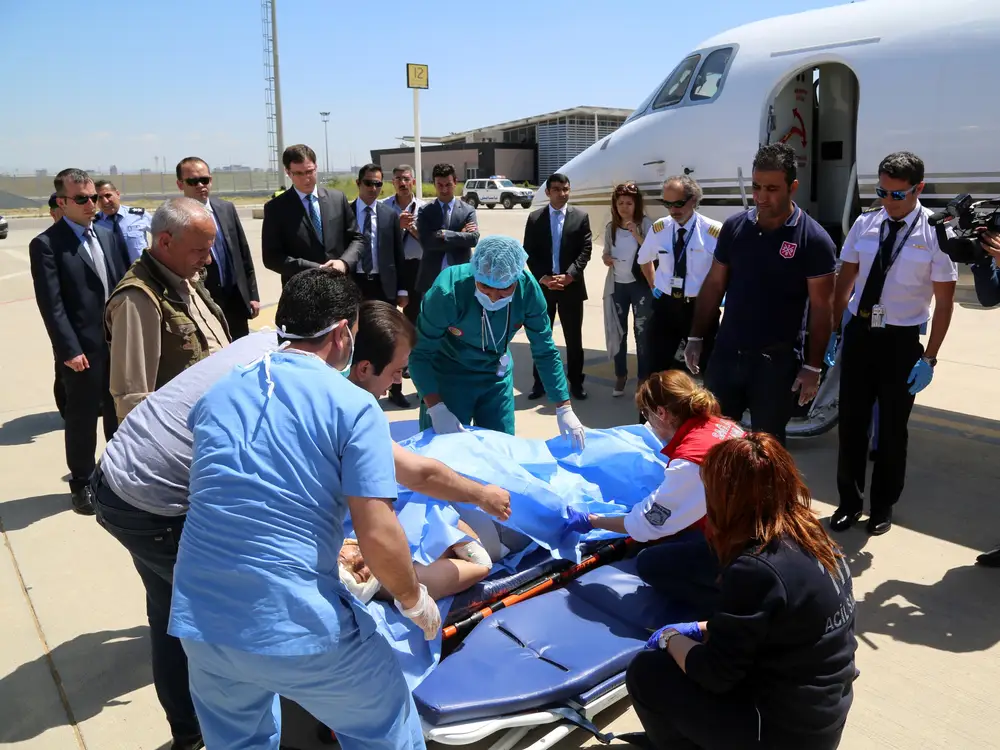When you decide to take a flight for work-related purposes or vacation, the last thing you want to think about is getting sick. Medical emergencies on the plane can happen at any point in time. At times, it can be life-threatening, if not attended to or treated properly.
Medical emergencies during flight are relatively uncommon but may crop up at any point in time. Let us not forget that there is limited access to professional medical care on the flight. It is important that the airline crew be trained in order to prevent any medical emergencies on the plane. In this blog, we shall give you detailed information on the most common medical emergencies on the plane and how to deal with them.
Incidence of medical emergencies on the plane
As per research, it is confirmed that only 1 in 600 commercial flights will have some sort of medical emergency during the plane journey. Even though flight emergencies are uncommon worldwide, it is important to be prepared well in advance.
The most common type of flight emergencies are nausea, fainting, and respiratory problems. Out of all the medical emergencies 1% are considered fatal.
Types of medical emergencies on the plane
The different types of medical emergencies on the plane are classified into two main categories which are as follows:
- Health-related medical emergencies such as gastrointestinal issues, allergic reactions, shortness of breath, and cardiac issues like chest pain, or heart attack.
- Injury-related medical emergencies such as anxiety, dizziness, vertigo, and fainting issues may lead to trauma or injury situations.
Here are the 6 most common medical emergencies that may occur on a plane.
Brain stroke

Brain stroke has a sudden onset due to interrupted blood flow to the brain or hypoxia condition in which there is reduced oxygen supply to the brain. This may lead to brain damage or sudden brain death due to a sudden paralytic stroke. The main symptoms of brain stroke are as follows:
- Sudden, severe, and excruciating headaches with extreme heaviness of the head
- Vertigo and fainting
- Weakness and low energy
- Numbness and tingling sensation in the face, arms, and legs
- Slurred speech with difficulty in speech
Cardiac issues

Cardiac or health-related issues can be difficult to handle during an active flight. Chest pain due to cardiac arrest can lead to death in minutes if not treated urgently. This is mainly caused by heart disease such as coronary artery disease or blockage of arteries, in cases of high blood pressure or other heart-related issues.
An episode of seizure and fits
This may occur due to stress or apprehension seen mainly in epileptic patients who are boarding the flight for the first time. The main symptoms of seizure are as follows:

- Loss of consciousness
- Severe muscle spasms
- Nerve like pain
- Convulsive attacks
- The epileptic episode may get traumatic
Respiratory problems

Asthmatic patients with COPD issues may get an episode of breathlessness which shows up as gasping for breath. This is also seen in patients with active cases of pneumonia or chronic bronchitis. The main symptoms of respiratory issues are as follows:
- Breathlessness
- Wheezing
- Chest tightness
- Congestion of chest
- Exertional Dyspnea
- Severe cough
Allergy
Patients with urticaria or allergies onboard the flight may develop allergic reactions during flight. It is important to check for the intensity of the allergic reaction. An anaphylactic reaction can be life-threatening at times in an emergency situation. The symptoms of the allergic reaction are as follows:
- Hives-like reaction with red erythematous patches
- Severe itching
- Swelling of eyes, lips, or face
- Severe condition of swelling of the throat
Trauma

Trauma can occur on the flight creating a medical emergency condition. It may occur due to falls or associated conditions mentioned above such as vertigo, fainting, or fits. This may lead to the following conditions such as:
- Head injury
- Broke bones
- Laceration due to open wounds
- Internal bleeding
Medical emergencies can happen at any point in time such as at work, while playing, in the office, or in college. It is an uncertain situation that can occur all of a sudden. There are many types of medical emergencies. Let us discuss the common 7 medical emergencies that can occur on active flight.
Medical help for emergencies on the flight

When on the flight, it is difficult to get medical professional help. In such cases, it is important for flight attendants to be responsible for caring for the sick and preventing any traumatic experiences for the passengers.
The cabin crew is trained to provide the following care on the flight:
- Bandages
- Cold packs
- Glucose solution
- First aid box
- AEDs (Automated External Defibrillators)
Steps to be followed for medical emergencies at the flight
Here are important steps to be followed for medical emergencies on the flight.
- Identify the passenger in medical distress
- Awareness about the situation to the captain and other crew members
- Call for appropriate items for first aid equipment
- The first response for ABC (Airway, Breathing, and Circulation)
- Check for the outcomes and determine the next course of action
- Stay calm and professional in stressful situations
- Follow the SAMPLE procedure which includes Symptoms, Allergies, Medications, Past history, Last meal, and Events of the affected passenger
- The cabin crew is generally linked with a doctor to provide professional diagnosis, especially in cases when there is no doctor onboarded in the flight
Along with being self-equipped, it is important to get support from online doctors or medical personnel to determine the next course of action. This will help to evaluate the situation in the flight whether it’s safe to continue the flight if the passenger received onboarded support or care. The flight may be required to be diverted in extreme cases of urgent care.




